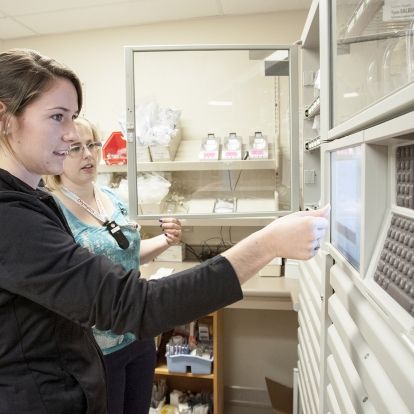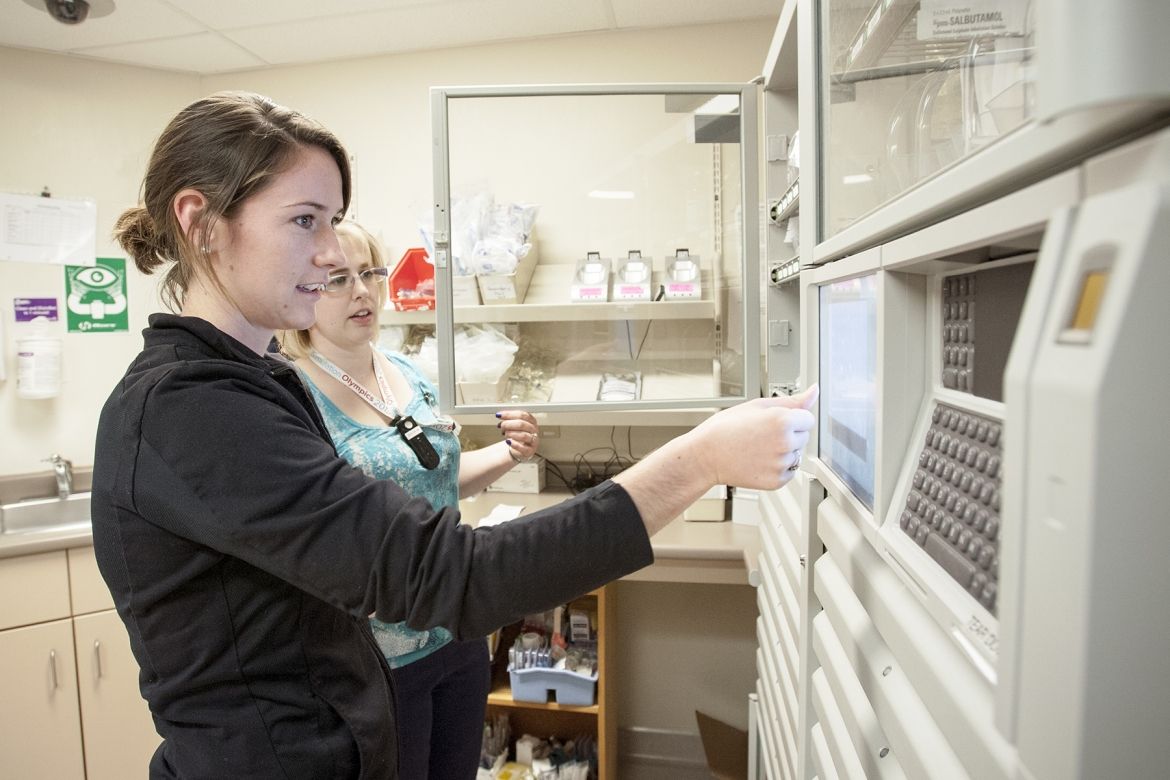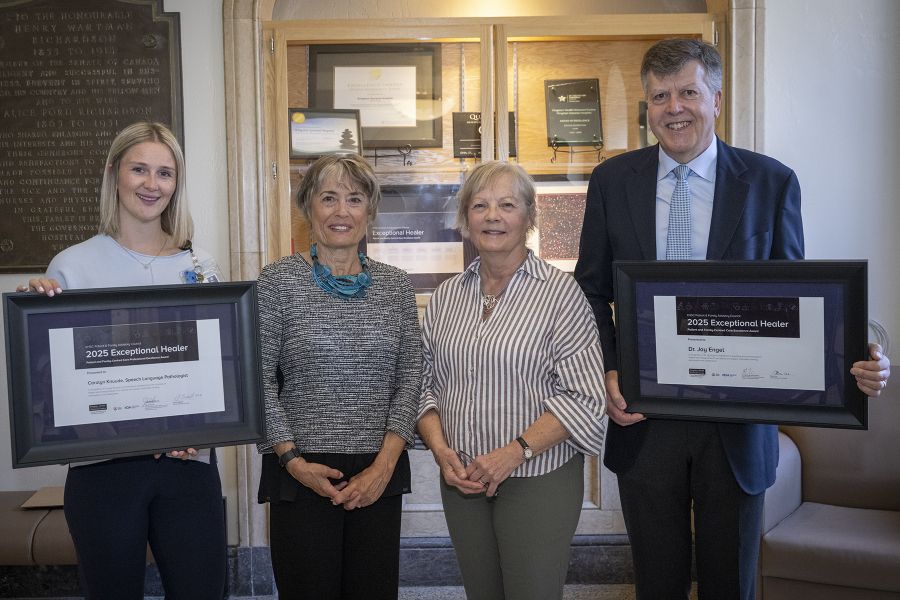
It's a busy time for the Automated Drug Cabinet projectat Kingston General Hospital. Kidd 5 just went live with a new cabinet on October 30 and staff on Kidd 6 are slated to begin using the system on November 19. Connell 10 will follow a week later on November 26.
"The project has just hit the halfway point with 11 units now up and running with new cabinets," says Marion MacInnis, Project Manager. "Staff have been very receptive to the new system and overall the rollout has been going very smoothly."
To help fine tune things, the implementation team recently invited staff using the cabinets to take an anonymous survey and share their feedback on how the cabinets work.
Under the previous system, it was up to the Pharmacy department to assemble a cassette for each patient containing most of the drugs they were expected to need over the next 24 hours. There were also a few common medications stored in cupboards on each unit for staff to access.
Now, thanks to the secure cabinets, a much wider range of medications is now available on the floor at all times. Nurses and Respiratory Therapists (RTs) can quickly access them for their patients by swiping their fingerprint at the cabinet and taking out what they need.
"Overall the respondents let us know they feel the cabinets are saving them time and helping them deliver better care, which is great news for our patients and their families," says MacInnis.
For example, 62 per cent of respondents said the cabinets have improved their access to patient medications and their ability to deliver them in a timely manner. About 83 per cent said the cabinets have reduced the number of times they are required to call the Pharmacy or the Pharmacy Technician to find out the status of a medication order.
Another benefit that's been noted is the drop in the number of Safe Reports that have to do with medications. The cabinets also help with case costing and inventory control as they track who took out what drug at what time.
The survey also asked staff for feedback on the electronic and hands-on training they received during the implementation. As a result, clinical educators on the floors will be focussing more on encouraging people to use of the Anywhere RN software application that comes with the cabinets.
Anywhere RN allows nurses to create a patient profile at a computer terminal anywhere on the unit, rather than at the cabinet itself. This helps save everyone time and reduces lineups at the machines, as the cabinet already knows which medications need to be dispensed and it opens the right drawers the second the patient's profile is selected by the nurse or RT standing in front of it.
Our Pharmacy is also helping to keep the flow going by carrying out a continuous improvement exercise to figure out the best times to stock up cabinets in each unit so they aren't being shut down during peak medication times.
"It's been a great collaborative effort by all the groups involved in this complex project and this includes everyone on the units, nursing, RTs, Pharmacy, Information Management, the Joint Planning Office and the Project Office," says MacInnis.
Gallery


Kathleen McKee, Registered Nurse, (front) gets some hands-on training on how to use a cabinet from Melanie Foisy, Clinical Educator, on the Davies 4 Intensive Care Unit at Kingston General Hospital.



